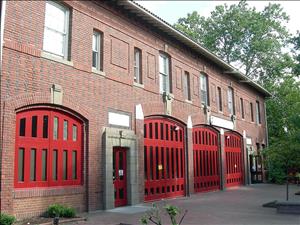The city of Seattle built Firehouse No. 23 to base Engine Company No. 23 (steam), Hose Company No. 23, and Ladder Company No. 3, all horse-drawn, as well as the fire battalion headquarters. The "T" design by the firm of Everett and Baker used the body of the T as the barn for the horses and hayloft. The cross portion contained three equipment bays downstairs and a dormitory and offices upstairs. There was a five-story hose tower as well.
The building was completed in 1909 and follows no particular architectural style. In 1918, the ladder company was motorized and in 1922, the horses of the engine company were retired. The battalion covered an area from the ship canal to the Rainier Valley. Before the days of radio dispatching, a light signal was installed at the intersection of Rainier Avenue S and S Orcas Street. When the battalion responded to alarms in the Rainier Valley, the signal told the crews to proceed to the call.
In the early 1970s, the city converted the structure to the Cherry Hill Neighborhood Center, continuing the tradition of service to the community. The interior was extensively remodeled into offices and a dance studio. Much of the original exterior has also been changed. The equipment bays were sealed over with a wood window wall to resemble the original double doors. The Central Area Motivation Program (CAMP), later renamed Centerstone, and again renamed the Byrd Barr place, was based there and as of 2025 remains there.
On December 13, 1976, the Seattle City Council designated the firehouse a Seattle Landmark because of its significance to the heritage of the community, its distinctive architectural style, and its familiarity as a visual feature in the neighborhood. Firehouse No. 23 is also on the National Register of Historic Places. Address: 722 18th Avenue, Seattle.

